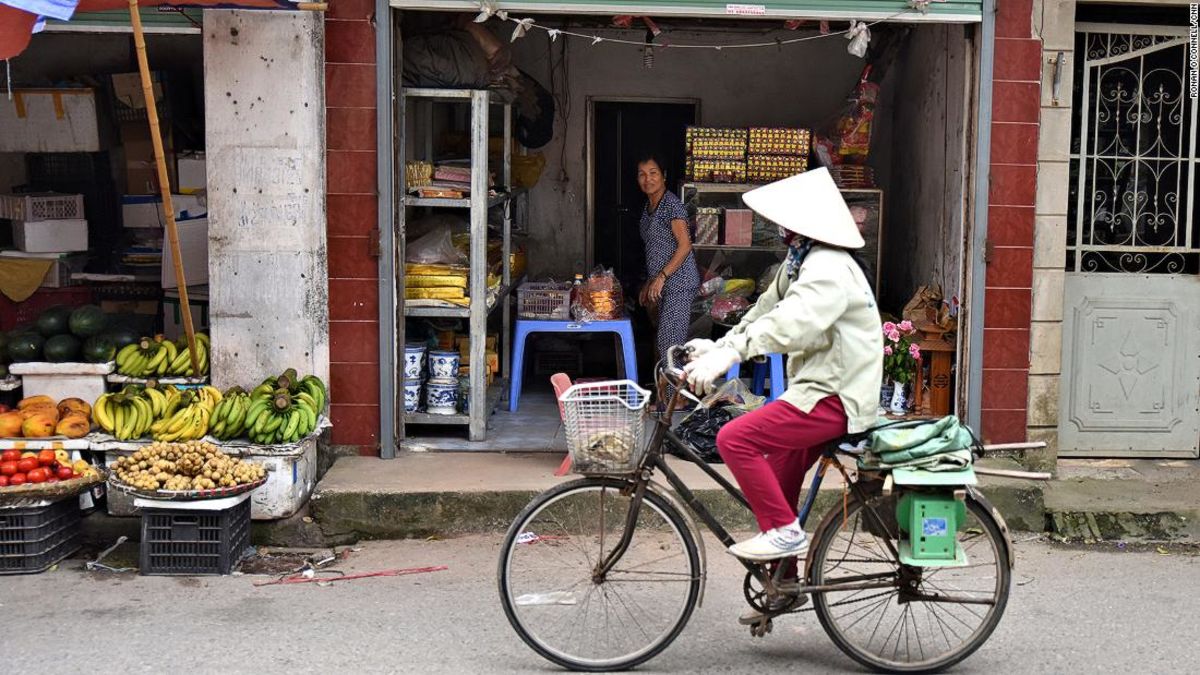(CNN) — Revered turtles, royal heritage, a dragon-shaped hall and a remarkable scholarly tradition — these are the eclectic attributes of one of Hanoi’s finest secrets.
As Hanoi has expanded and modernized rapidly over the past 20 years, many of its oldest villages have either been erased or gentrified to the point they’ve lost their original character.
Pretty stone gates mark its borders, timeworn French-Vietnamese buildings line its narrow lanes, street traders peer from beneath conical hats and children play outside its 17th century Buddhist temple, Tu Khanh.
A temple of gods
Spread across more than three hectares (about 323,000 square feet), Tu Khanh is filled with gardens, shaded courtyards, ornate pagodas and stately pavilions.
Most of the buildings are constructed from dark-colored ironwood, with intricately-carved eaves sitting beneath steep roofs topped by terracotta tiles.
One of the first monuments visitors will discover inside the temple’s sprawling, manicured grounds is a stone statue of a crane standing on the back of a turtle.
Turtles have been cherished by Hanoi residents for centuries. In local mythology, these shelled creatures represent longevity and are viewed as icons of Vietnam’s success across its many fights for independence.
This statue is one of more than 50 stone and metal monuments scattered throughout Tu Khanh, which was built in the 1650s.
Among them are three large brass bells cast in the early 19th century and a cluster of steles (stone towers) that are variously dedicated to Buddhist gods and scholarly luminaries born in Dong Ngac.
A history of academic excellence
Despite being tiny — the village is less than one square meter in size and home to 1,000 or so people — Dong Ngac has birthed an unusually large number of academic high achievers, including dozens of doctors of literature.
These include Pham Gia Khiem, Vietnam’s deputy prime minister from 1997 to 2011, and Hoang Tang Bi, a revered writer and social activist in the early 1900s.
To this day, families here compete fiercely against each other to rear the most outstanding pupils.
So valued is Dong Ngac for producing influential scholars that it has been presented with dozens of royal awards, dating as far back as Vietnam’s Le Dynasty period (1428-1788).
The village’s literary tradition is even celebrated via its architecture. Symbols of books are carved into the old gates that sit at each end of its four hamlets.
Scattered throughout these hamlets are almost 100 homes, the oldest of which date back to the early 1600s. The complexity of their stonemasonry and woodwork captivates as one walks through its nest of narrow lanes, being greeted by smiles and waves from residents, who share treats like piping hot lotus tea and Banh Gio rice dumplings, two of local specialties.
Heading to Hanoi? Here’s a look at five of the top dishes every visitor needs to try while in the Vietnamese capital — egg coffee included.
Dong Ngac Communal House is the hub of the village.
For almost 400 years, this complex has hosted Dong Ngac’s most significant events and acted as a place of worship. Built in the first half of the 1600s, it was designed to look from above like the head of a dragon. Its ironwood prayer hall is intended to represent the dragon’s skull, with the main gate being its nose and two water wells acting as its eyes.
The central hall houses a prized collection of Le Dynasty art works, which cover themes of Vietnamese agriculture, commerce, fishing, artistry and, of course, literature.
Every day Dong Ngac locals kneel here in the grounds of their Communal House to not just pray to Buddhist gods, but also to remember the academics who built Dong Ngac’s lofty reputation.
Getting there
Dong Ngac is located in the northern suburbs of the Vietnamese capital Hanoi. From Hanoi’s main tourist precinct, the Old Quarter, the village is about 30 minutes’ away by taxi.
As part of your trip to Dong Ngac, stop off at the historic Phu Tay Ho temple and Van Nien pagoda, both of which are on the banks of the large and picturesque West Lake.
Based between Ireland, Australia and Asia, Ronan O’Connell is a freelance journalist and photographer with 16 years of experience as a reporter. He has contributed to more than 70 media outlets across the world including BBC, Forbes, The Guardian, Travel + Leisure, The San Francisco Chronicle and The Independent.

